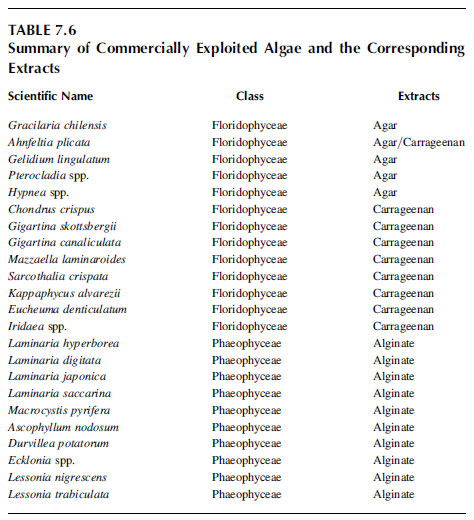Carrageenan is a general name for polysaccharides extracted from certain kinds of algae which are built up, in contrast to agar, from D-galactopyranose units only. The word carrageenan is derived from the colloquial Irish name for this macroalgae, carrageen (from the Irish place name, probably Carrigeen Head in Co. Donegal, Carraigı´n; “little rock”); the use of this macroalgae to extract a gel is known in Ireland since 1810. Chondrus crispus used to be the sole source of carrageenan, but species of Eucheuma, Ahnfeltia, and Gigartina are now commonly used. About 28,000 tons of carrageenan are manufactured worldwide, and although Chondrus is no longer the unique source, it is still the principal one. Modern carrageenan is a branded product designed by mixing various types of carrageenan, to give a gel with particular qualities. Most of the Chondrus that is used in the carrageenan
industry comes from the Maritime Provinces of Canada (Nova Scotia, etc.), where about 50,000 wet tons of Chondrus crispus are harvested each year from natural populations. The bulk of the harvest is collected using long-handled rakes and dredges from small boats. The macroalgae is then dried, either by spreading and air-drying or by using rotary dryers, and exported to the U.S. and
Denmark for processing.
Carrageenan production (valued at U.S. $240 million annually) was originally dependent on wild macroalgae, especially Chondrus crispus (Irish moss), a small macroalgae growing in cold waters, with a limited resource base in France, Ireland, Portugal, Spain, and the east coast provinces of Canada. As the carrageenan industry expanded, the demand for raw material began to strain the supply from natural resources. However, since the early 1970s the industry has expanded rapidly following the availability of other carrageenan-containing macroalgae that have been successfully cultivated in warmwater countries with low labor costs. Today, most raw material comes from two species originally cultivated in the Philippines, Kappaphycus alvarezii and Eucheuma denticulatum, but which are now also cultivated in other warm-water countries such as Indonesia and the United Republic of Tanzania. Limited quantities of wild Chondrus are still used; attempts to cultivate Chondrus in tanks have been successful biologically, but it has proved uneconomic as a raw material for carrageenan. Wild species of Gigartina and Iridaea from Chile are also being harvested and efforts are being made to find cultivation methods for these. Table 7.6 summarizes commercially exploited algae and the corresponding extract.

TABLE 7.6 Summary of Commercially Exploted Algae and the Corresponding Extract